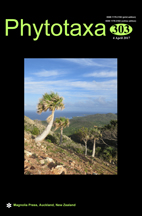Abstract
The cosmopolitan species Hymenophyllum tunbrigense was traditionally represented in southern South America by two allopatric varieties: H. tunbrigense var. tunbrigense in the Andean Patagonian forests of Argentina and Chile, and H. tunbrigense var. cordobense, an endemic taxon restricted to the mountain system of central and north-western Argentina. Given the diagnosable differences between these two taxa, and between these taxa and the European and African entity, based on morphological, anatomical, molecular, ecological and distributional evidence, we exclude H. tunbrigense for Southern Cone, propose to revalidate the name Hymenophyllum asperulum for the species present in the Magellanic and Valdivian forests and elevate H. tunbrigense var. cordobense to species rank. We consider these two taxa as endemic species, closely related to the widespread H. tunbrigense. We also cite Hymenophyllum cordobense for first time for the flora of Bolivia.

